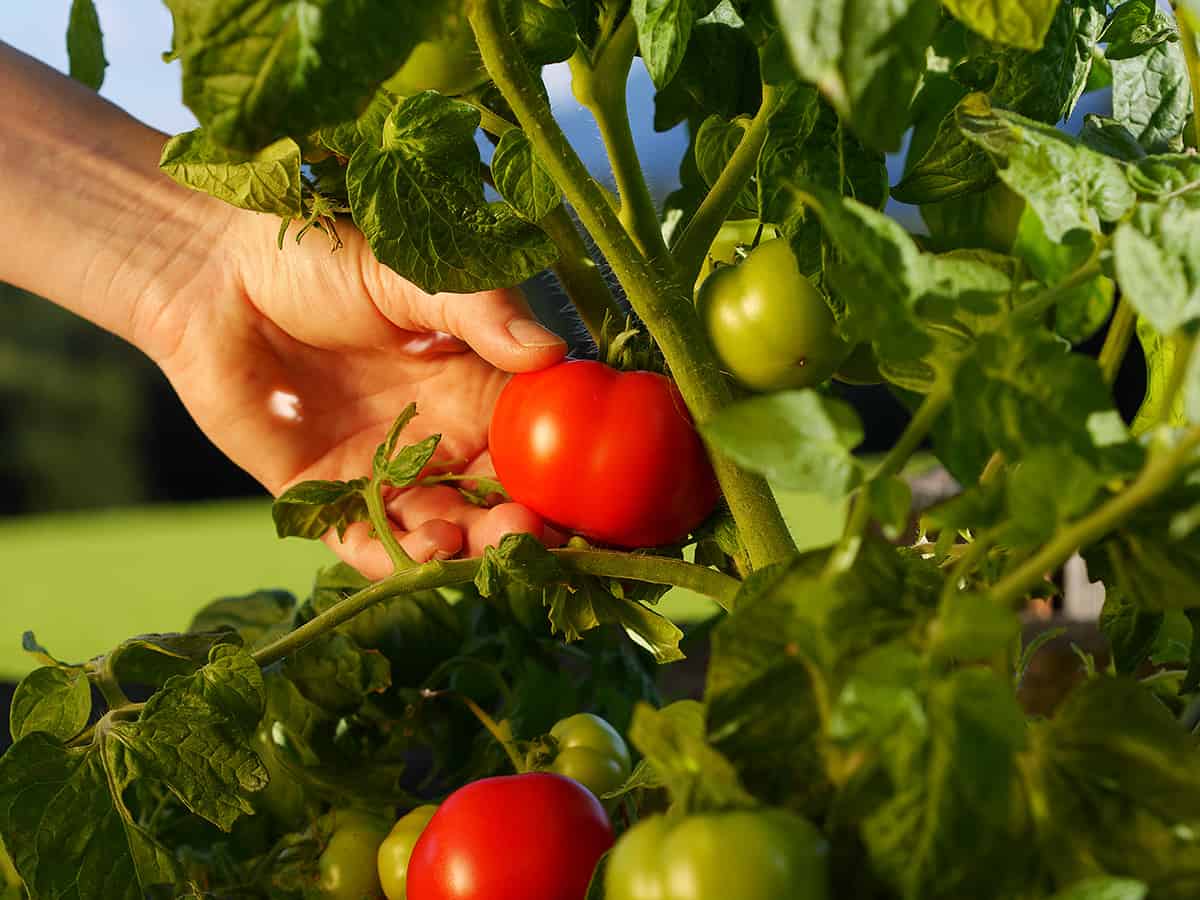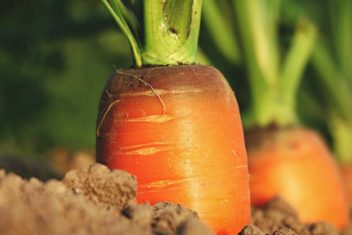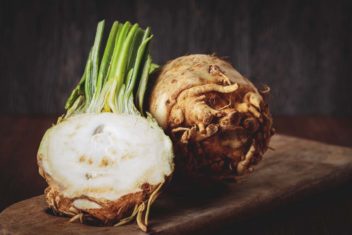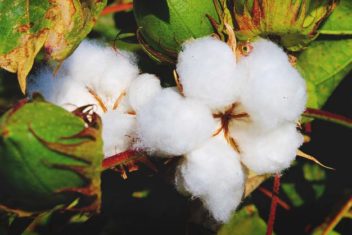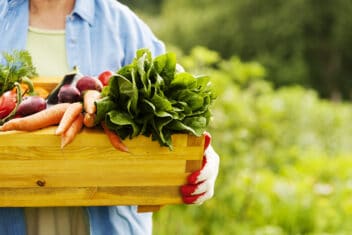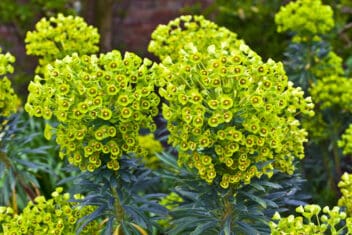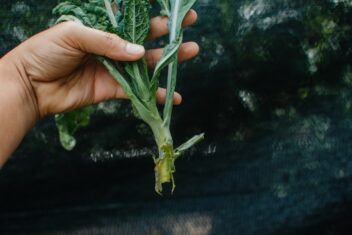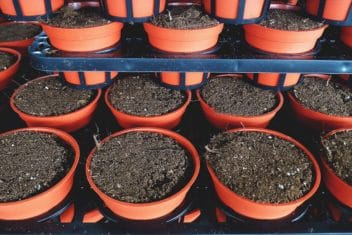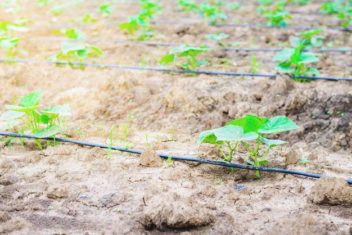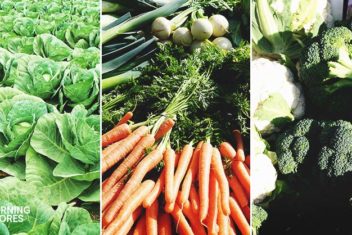If you’re one of the millions of people worldwide who just happen to be color-blind, you may find food gardening a bit more challenging than others do. When it comes to fruits and vegetables like tomatoes, color is one of the key visual hints people use to determine is something is ripe.
Especially when it comes to tomatoes.
If you’re color-blind, or even if you just want to know whether your tomatoes are ripe without using color as an indicator, keep reading. We’ll show you what you need to know.
Where There’s a Will, There’s a Way
Most of us are used to glancing around our gardens and shrieking with joy when we see splashes of deep red, pink, and orange peeking out from lush green foliage. But for people with color-blindness, those waters are muddied.
One of my best friends is color-blind, and I asked his advice on how he determines whether the veg and fruits in his garden were ripe or not. It was fascinating to find out how he navigated this particular issue.
Most of us take all our senses for granted when it comes to gardening (and other day-to-day activities), so it’s great to discover alternative measures.
Since gardeners with color blindness have difficulty seeing certain hues, they may struggle with knowing when to harvest their crops. After all, if everything you see is sort of greyish-green, how can you tell whether your tomatoes have developed enough to pick?
If harvested too early, the fruits may not ripen properly. In contrast, if left on the stem for too long, they can split and start to rot.
You might think that the only options are to hope and pray that you time things correctly, but no need to worry! There are some very handy ways to determine ripeness, above and beyond color.
These tips are also super helpful if you’re growing green or yellow tomatoes, since their ripeness isn’t determined by color changes. Let’s take a look at some alternative ways to find out whether your luscious tomatoes are ready for the saucepot.
1. Visual Cues
You might be confused by this one since the crux of this article is how to tell unripe tomatoes from green ones. Visually, this is almost impossible if you have red-green color blindness.
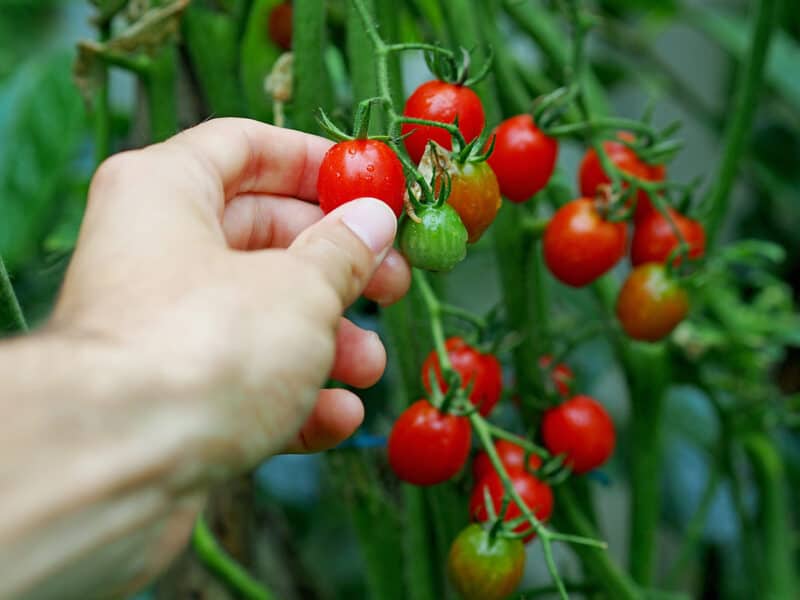
…or so you’d assume.
Color-blind people may have trouble differentiating different hues, but they can see all kinds of shades of gray really well. Similarly, even though they can’t tell red from green, they can differentiate between their tones.
Green appears as a lighter shade than red: the latter is a deeper shade and seems to be more saturated. I asked a color-blind friend of mine if he could tell the difference between how ripe and unripe tomatoes looked in the garden, and he said that the ripe ones (which were red to me), were darker.
He also said that they hung lower than the riper ones, which is another great visual cue.
When tomatoes ripen, they get very juicy and watery. Liquids weigh quite a bit, which is why ripe fruits will often bend or snap the branches and vines they hang from.
All of these visual hints are great as a first identification method. To be sure, however, it’s best to check out the second and third suggestions here as well.
2. Texture
The next time you get a chance to do so, take a ripe tomato in one hand and an unripe tomato in the other, and compare how they feel.
That unripe tomato is going to feel very firm to the touch. In contrast, the ripe one will have a glorious give when you press into it. Don’t squish it too fiercely when you’re checking, though! Just squeeze gently between your fingertips.
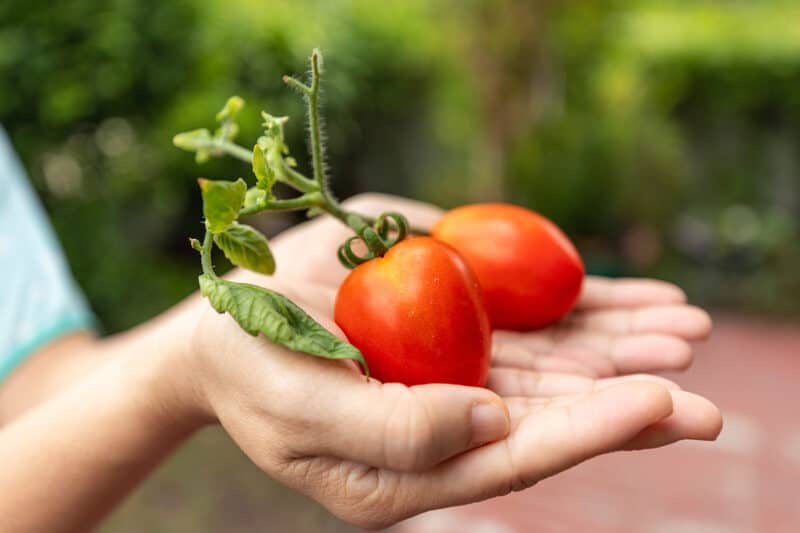
Remember what we said about water density in ripe fruits just above? You should be able to tell the difference just by holding them. Both will feel heavy in your hand, but there’s a fullness to ripe fruits that’s different from the unripe ones.
As an additional cue, you’ll find that the outer skin thins significantly. An unripe tomato’s skin will seem thick and hard, almost like a protective shell. Meanwhile, a ripe tomato will have thin skin that can be sliced easily.
Make sure to look at the tomato skin’s surface as well. An unripe tomato skin will have a matte surface. It may be slightly coarse to the touch and, overall, will appear quite dull. Once it ripens, that skin becomes shiny and glossy—almost wet, depending on the light.
This is a great tip for anyone—not just those who are color blind. I’ve used this technique for green and yellow tomato varieties, as well as when I’ve had to harvest in the dark.
The growing season here in rural Quebec is quite short, so I’ve had to scurry out late at night or super early in the morning to rescue fruits before a sudden snow squall hit.
3. Ease of Harvesting
Have you ever noticed that when tomatoes are ripe, they just sort of fall into your hand with the slightest tug? Sometimes it doesn’t even take a tugging: I brushed up against a cherry tomato plant earlier today and a bunch of fruits dove into my basket on their own.
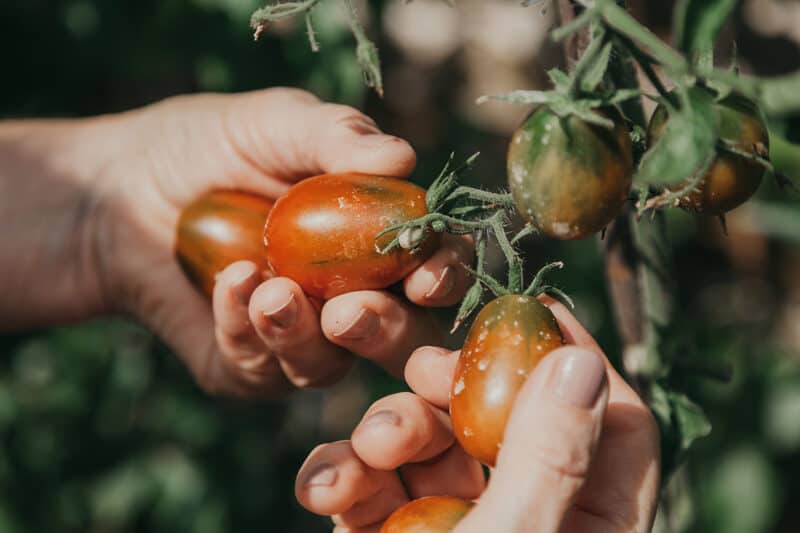
No matter what color tomatoes you’re growing, you’ll know they’re ripe when they’re both pliant to the touch (as above), and let go of their vine-y grip very easily if you pull on them gently.
Try not to go around yanking on all of your tomatoes to see if they come off at a touch. All you need is to pull very, very gently to see if one or two of them are loose enough to harvest. If you’ve pruned your tomato bushes regularly, chances are that most of the fruits will ripen around the same time.
You may get some staggering, especially if you’ve planted multiple varieties, but pulling on a few fruits to determine their ripeness will give you a pretty good idea as to whether their neighbors are ready as well. Or not.
As you can imagine, this is a great technique for people who are visually impaired as well as those who are color blind, as it doesn’t require visual information. Furthermore, it applies to any bush, tree, or vining fruit. Ripe apples and peaches will release into your hand with the tiniest tug, as will blackberries and currants.
Additional Option: The Scent + Taste Test
If you’re feeling experimental, you can always ditch color use scent and taste to determine if your tomatoes are ripe.
Some varieties have thicker skins and lower/higher water content, so it may be a bit harder to differentiate the ripe from the unripe. As such, you can pick one or two that you think might be ripe, and try them out.
Ripe tomatoes have a strong… well, “tomato-y” scent. There’s really no other way to describe it. Meanwhile, unripe ones won’t smell like much at all, other than the “green” scent that comes from the stem and vine.
Similarly, unripe tomatoes don’t have much flavor, while ripe ones taste like summer sunshine with every bite.
Tasting one or two of your fruits can give you a better idea of how the others are ripening. And hey, you get to eat great stuff from your garden—that makes every day a bit brighter, doesn’t it?
Get Those Tomatoes Growing!
Being differently-abled in any way, shape, or form doesn’t need to be a hindrance to growing as much food as you like! There are helpful ways around every possible issue.
Tomatoes are some of the most beloved food plants around, and as backyard (and patio) farms become more popular, we can only imagine how many different varieties will be cultivated by eager gardeners around the world.
In addition to the standard red and pink tomatoes, remember that there are luscious purple, black, orange, and even striped multicolor varieties out there!
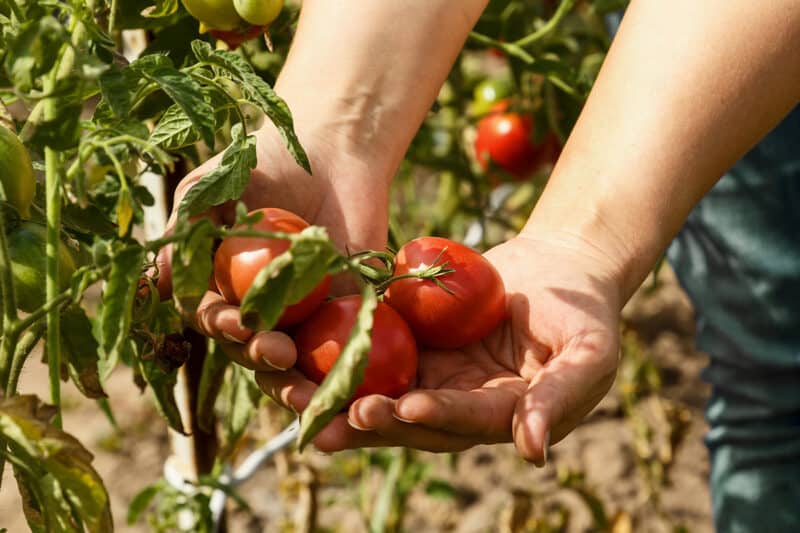
They all ripen at different rates, but now you’ll be able to ascertain their optimal ripeness, regardless of what color they might be.
*Note: as an added tip, consider growing green tomatoes if your area is plagued by squirrels, birds, and other tomato-loving animals. They go for deep red, purple, and orange fruits because those visual cues imply ripeness.
As a result, they’ll leave green, yellow, and white fruits alone! This works well for gooseberries, currants, raspberries, and other light-colored berries too.
Happy Growing!
Hopefully, these little tips can help you and your loved ones with all of your tomato-growing endeavors.
And hey, if you happen to harvest some tomatoes, regardless of color, that aren’t *quite* perfectly ripe yet, that’s absolutely okay. You can ripen them once picked in shopping bags: just toss a banana or ripe apple in there with them to hasten the process.
Remember that you can eat green tomatoes too! They’re fabulous in sauces and salsas (hello salsa verde), and you can always bread and fry them as well. They’re remarkably versatile fruits, aren’t they?
Once you’ve harvested your perfect, delicious tomatoes, be sure to save as many of the seeds as possible. Saving heirloom, organic seeds is especially important, as is sharing them with your community.
Not only will you be keeping rare species alive, but you’ll also be promoting biodiversity, and helping others enjoy incredibly delicious vegetables too.
